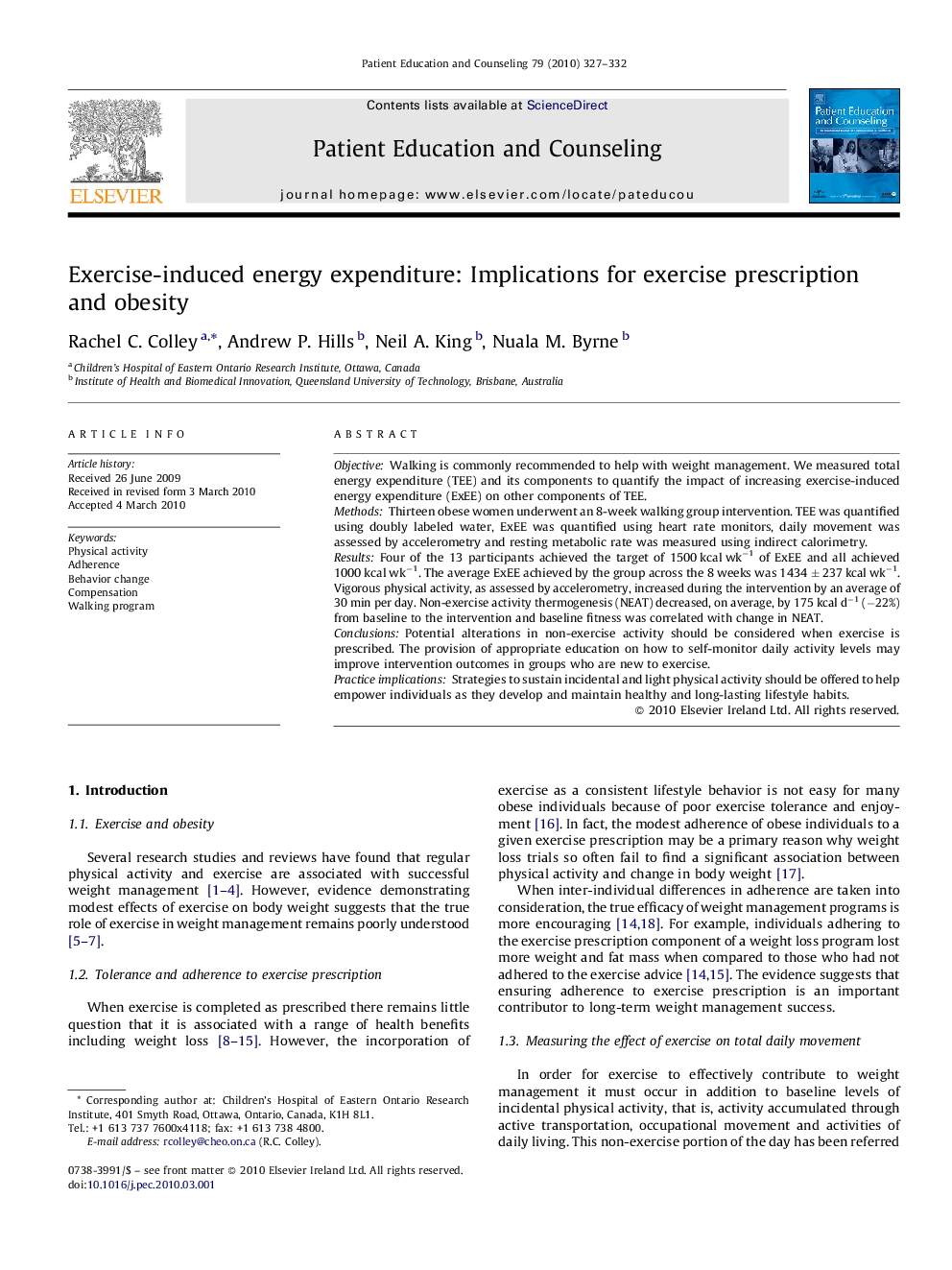| Article ID | Journal | Published Year | Pages | File Type |
|---|---|---|---|---|
| 3814928 | Patient Education and Counseling | 2010 | 6 Pages |
ObjectiveWalking is commonly recommended to help with weight management. We measured total energy expenditure (TEE) and its components to quantify the impact of increasing exercise-induced energy expenditure (ExEE) on other components of TEE.MethodsThirteen obese women underwent an 8-week walking group intervention. TEE was quantified using doubly labeled water, ExEE was quantified using heart rate monitors, daily movement was assessed by accelerometry and resting metabolic rate was measured using indirect calorimetry.ResultsFour of the 13 participants achieved the target of 1500 kcal wk−1 of ExEE and all achieved 1000 kcal wk−1. The average ExEE achieved by the group across the 8 weeks was 1434 ± 237 kcal wk−1. Vigorous physical activity, as assessed by accelerometry, increased during the intervention by an average of 30 min per day. Non-exercise activity thermogenesis (NEAT) decreased, on average, by 175 kcal d−1 (−22%) from baseline to the intervention and baseline fitness was correlated with change in NEAT.ConclusionsPotential alterations in non-exercise activity should be considered when exercise is prescribed. The provision of appropriate education on how to self-monitor daily activity levels may improve intervention outcomes in groups who are new to exercise.Practice implicationsStrategies to sustain incidental and light physical activity should be offered to help empower individuals as they develop and maintain healthy and long-lasting lifestyle habits.
